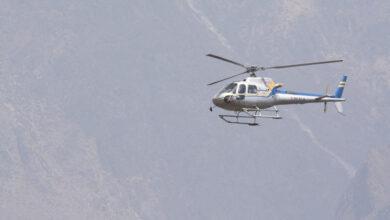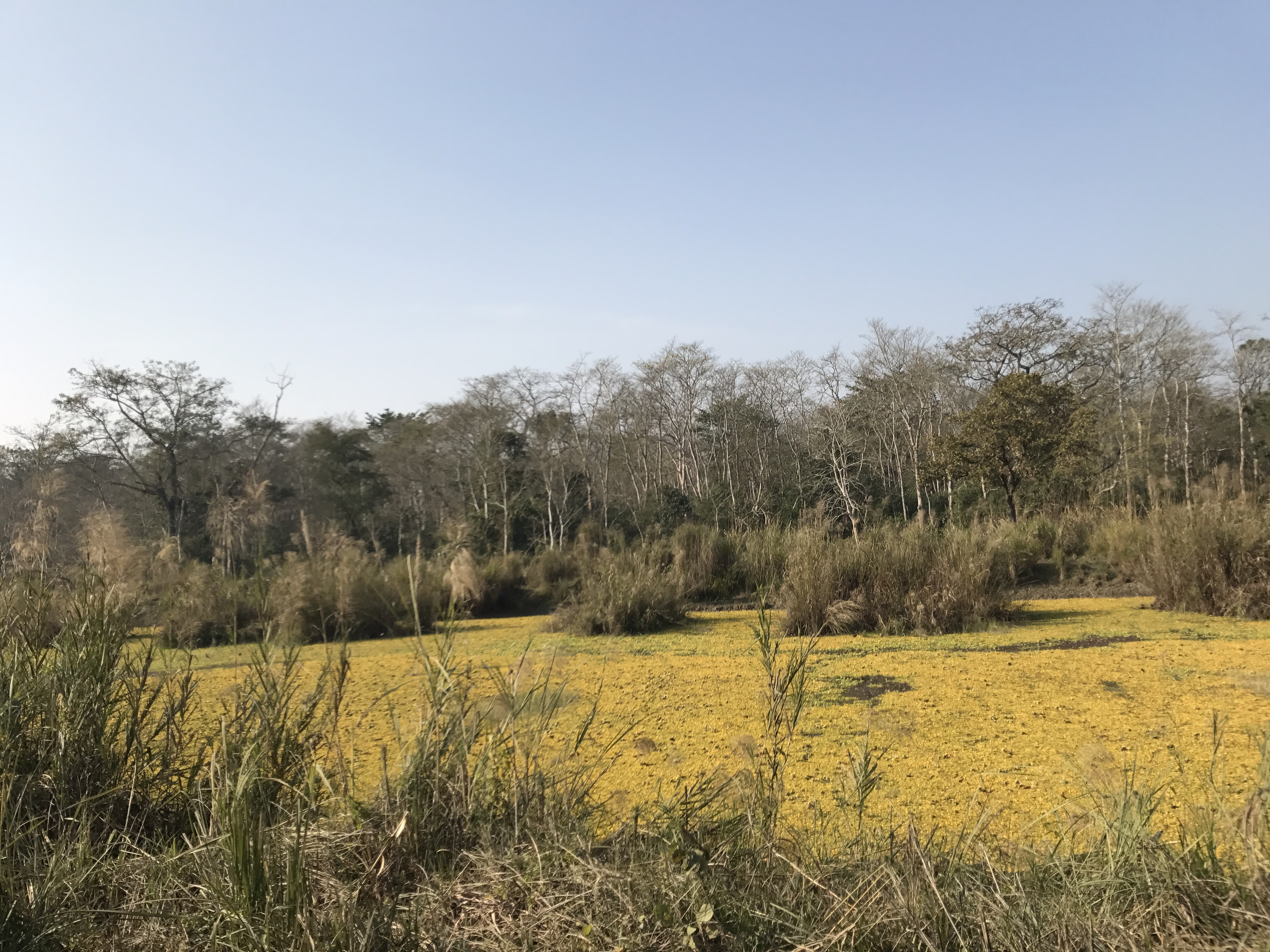Nepal Tours
3 Days in the Chitwan National Park: Our Story of Jungle Safari in Nepal
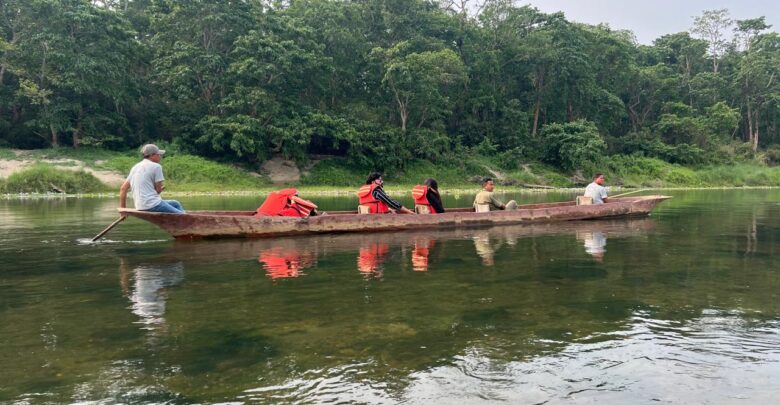
Early in the morning, the sun peeked over the Kathmandu Valley as we packed into a jeep, excited for the journey to Chitwan National Park organized by Amigo Treks and Expedition. The drive was scenic- winding roads, green hills and rivers rushing far below.
It took us 6 hours to reach Sauraha, a peaceful town near the park’s entrance. The hotel staff welcomed us with cold drinks and warm smiles and helped us with hotel check in formalities. We then met our nature guide, who briefed us regarding the upcoming activities, which got us very excited to start the activities right away. However, we first decided to have our lunch.
The lunch was so delicious that we ended up eating more than usual.
In the evening, we visited a nearby Tharu village, learning about the indigenous Tharu people- their unique houses, farming traditions and deep connection to the forest. The things that stood out to us the most about them was…
- Their resistance to Malaria – Historically, they lived in the malaria-infested jungles of Terai-including Chitwan – when others avoided the region due to the deadly disease. Surprisingly, they developed a genetic resistance to malaria, allowing them to thrive in the area for centuries. This also made them the original settlers and guardians of the dense Chitwan forests, long before modern development and tourism even began. Their unique adaptation has fascinated scientists and anthropologists around the world.
- Their Eco-Friendly Architecture – The houses here are made up of mud, cow dung and rice husks, which not just insulates and beats the intense summer heat, but also repels insects. These houses are decorated by beautiful wall arts that carry cultural and spiritual symbolism. These decorations are specially done by the women- the homemakers of the community.
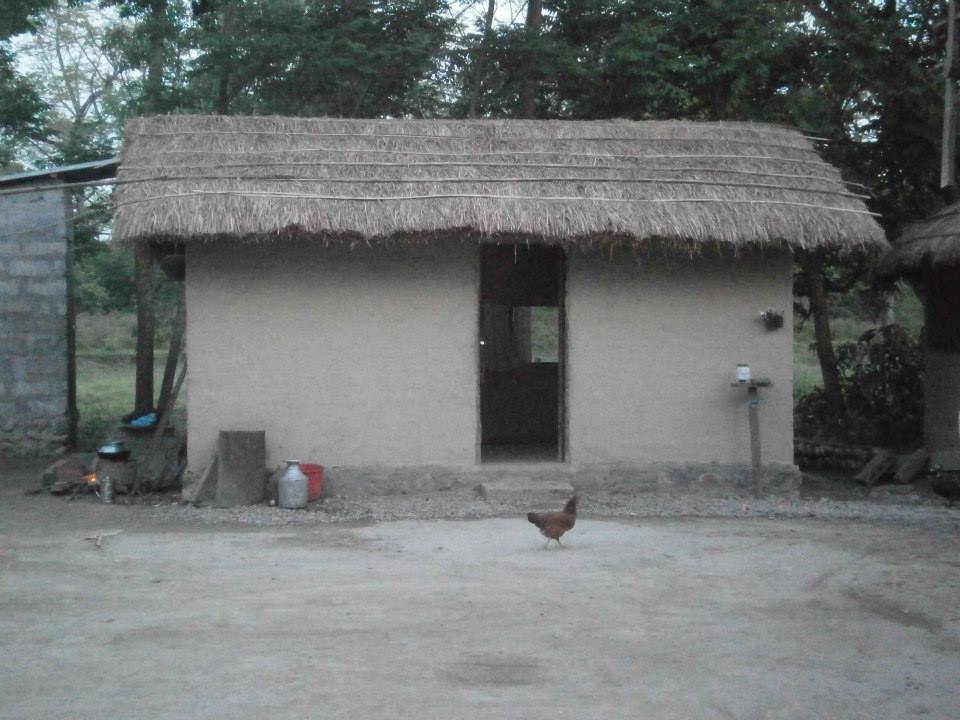
- Their own language and surprisingly rich oral traditions. Although many Tharu people speak Nepali language, they have their own languages and dialects, which they prefer to use within their community. They also have folktales, songs and proverbs that reflect their deep relationship with nature and community life. Some of the most common proverbs are:
“Chun-chun ke bhari, hathi le khay.” This means the elephant eats what ants have gathered bit by bit, which reflects a sense of injustice- that the powerful often enjoy the benefit of the hard work of the weak. It’s a common saying in farming communities like the Tharu, who historically faced exploitation.
“Paani jasta ban, tara dhunga jasta bana”. This means be like water, but stay as firm as a rock. This is a wise reminder to be adaptable and humble like water, but stand strong in your values, like a rock.
“Jati garau, bagla kaile hamsa hudaina.” This means no matter what you do, a heron will never become a swan. This speaks to the idea that one’s true nature can’t be changed by appearance- a message about authenticity and staying true to yourself.
The list can go on ……
- Their own New Year’s Day (Maghi) – This is their biggest festival and falls around mid-January. On this day they not just celebrate the beginning of the New Year, but also choose community leaders, settle disputes and enjoy a week-long fest with dance and music. This makes the best time to visit Chitwan and a great time to witness authentic Tharu culture.
- Their art of living in and with the forest and farming. The forest in Chitwan has always been the major provider of their basic needs. Their building materials, such as mud, grass, bamboo that help them build structures that are naturally resistant to the humid Terai climate, all come from forest and nature. Over the years, they have also been self-sufficient farmers, skilled in forest-based living. They also practice a unique form of agriculture called slash-and-burn (jhum cultivation), which is a farming method where land is cleared for cultivation by cutting down and burning vegetation. This process releases nutrients into the soil, temporarily enriching it for crop growth.
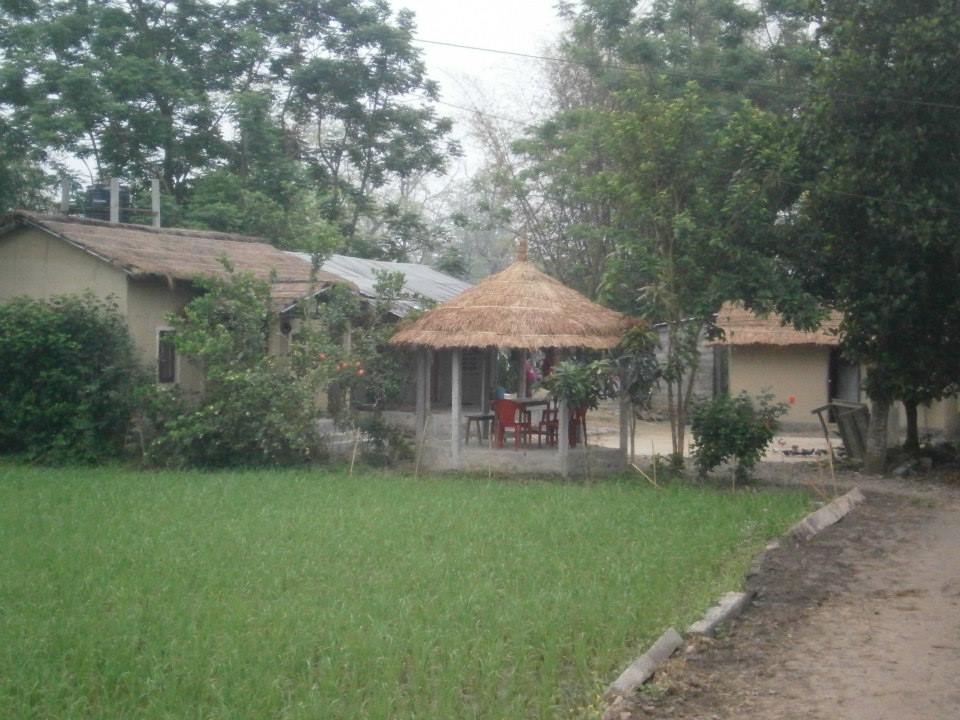
- Their unique social structure. Historically, this community practiced a collective decision-making system through local councils called ‘Badghar’ or ‘Mahata’.These elders would resolve disputes and lead community affairs- an early form of grassroots governance.
This was a quick, yet a very insightful visit. The village walk beautifully ended up at the sunset viewpoint. As the sun started to dip behind the silhouettes of the jungle, the Rapti River started to glow in golden-orange hues and soon everything became calm. The birds flew back to their home and the jungle hummed quietly in the back ground. The nature whispered, “slow down and breathe”. With just nature surrounding us, we felt completely at bliss.
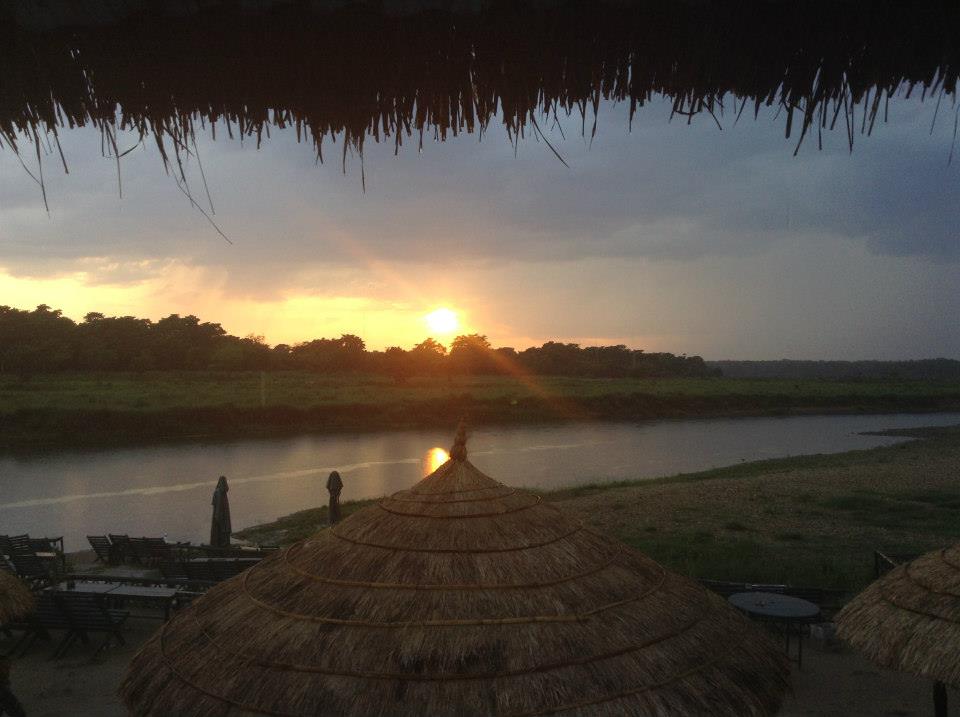
We then got back to the hotel for dinner and overnight stay..
After dinner we also enjoyed a Tharu cultural dance show, where dancers moved to the beat of drums around a crackling fire. These dances are an integral part of their culture, rituals and celebrations and reflect their close relationship with nature, community life and spirituality, which makes them very unique. These extremely talented performers performed different forms of Tharu dance for us, such as Stick Dance (Lathi Nach)– in which often male dancers perform rhythmic movements with long wooden sticks, clashing them in synchronized patterns, symbolizing strength and community coordination; Jhumra Nach – especially performed by women dancers during the festival of Maghi, featuring graceful movements and traditional songs; Mayur Dance (Peacock Dance)- a visually striking dance performance, in which dancers dressed as peacock mimic the movements of a peacock; Sakhiya Nach (Friends Dance)- often performed by young Tharu girls in groups with coordinated hand and foot movements as a part of festival celebrations. What made these dances even more captivating were the vibrant handwoven costumes, intricate beads and ornaments worn by the performers, and the lively music performed by talented local musicians using instruments like Madal and Dholak ( a two-headed hand drum) and Tungna (a plucked sting instrument).
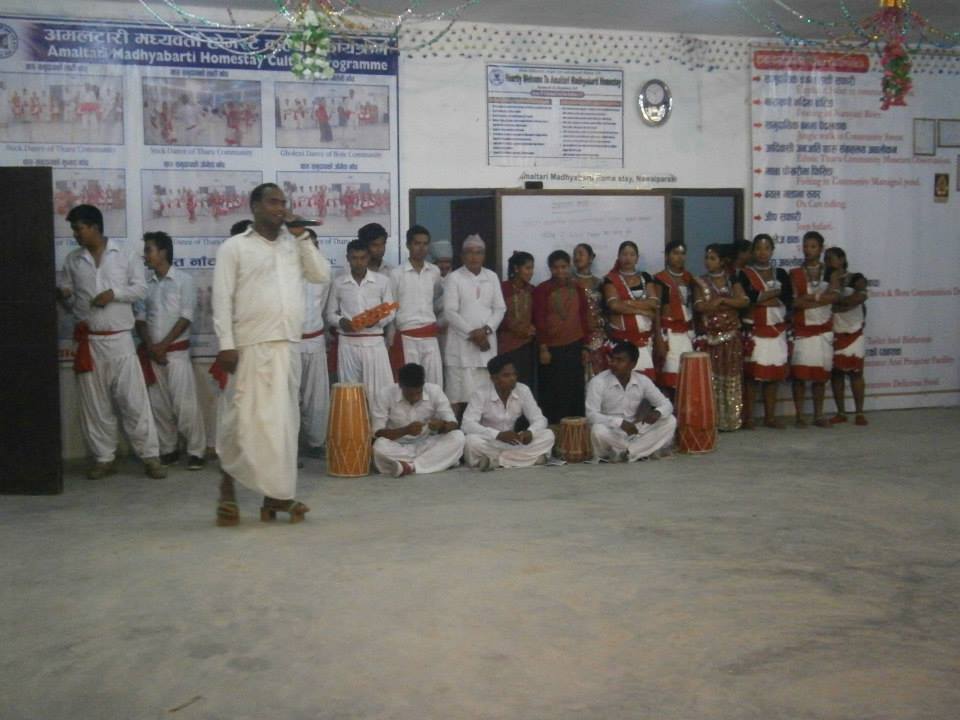
We then went to bed with the sound of jungle birds singing in the distance.
Excited for the day, we woke up early in the morning and the birds were already up, awake and singing. It’s December and the mornings are cool and misty. We quickly had our breakfast, grabbed a light jacket and joined a small group for the day’s adventure. Our guide greeted us with a smile. “Ready to meet the wild side of Nepal?” he asked.
“Yes!’ we excitedly answered.
The first stop was a canoe ride down the Rapti River. A canoe is a narrow, lightweight boat with pointed ends, typically paddled by hand, used for travel or recreation on calm waters like rivers and lakes. These boats allow for a silent, eco-friendly and non-intrusive way to explore the natural habitat, offering close-up views of wildlife, especially near rivers, without disturbing the animals or the environment- making it a best option for jungle safari. As the wooden canoe glided quietly over the still water, on the bank we could spot the first mugger crocodile lay warming itself in the sun. A little further, a gharial – long and slender- peeked its snout above the surface. As we further drifted down the river, deep into the nature, colorful birds, such as kingfishers, storks, otters, hornbills, and bright bee eaters flitted through the trees. It felt like magic unfolding too fast for us to absorb.

After the ride, our next jungle adventure was the jeep safari, the highlight of this jungle safari. Bouncing along the jungle trails, as we rumbled through tall grassland and Sal forest, we spotted deer, wild boar and even one-horned rhinoceros grazing peacefully by the waterhole with its calf. We watched them silently, without disturbing the rhythm of their life.The guide whispered the stories of the Royal Bengal tigers and although we didn’t see one, just knowing they were out there was thrilling. He also told us that Chitwan is one of the last safe homes for this beautiful creature.
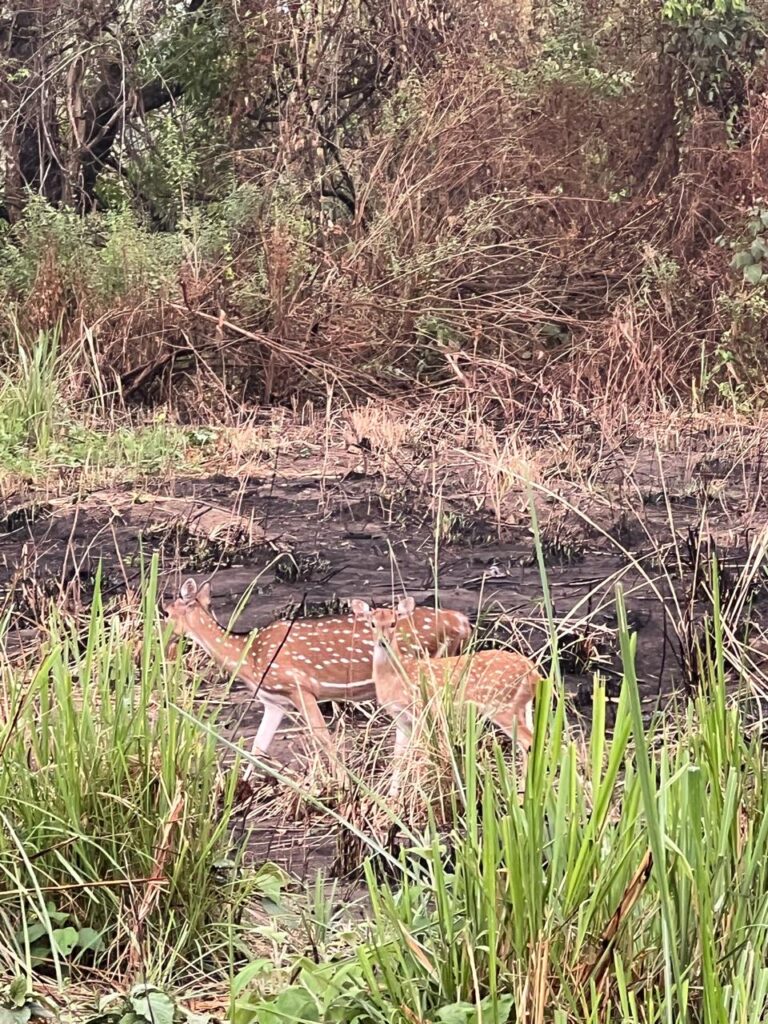
In the evening, we visited the Elephant Breeding Center, learning about the Chitwan National Park’s effort to protect these gentle giants. Some of the group members also opted for the birdwatching tour, while we decided to relax by the river and take the trip the next morning.Tired we decided to call it an early night.
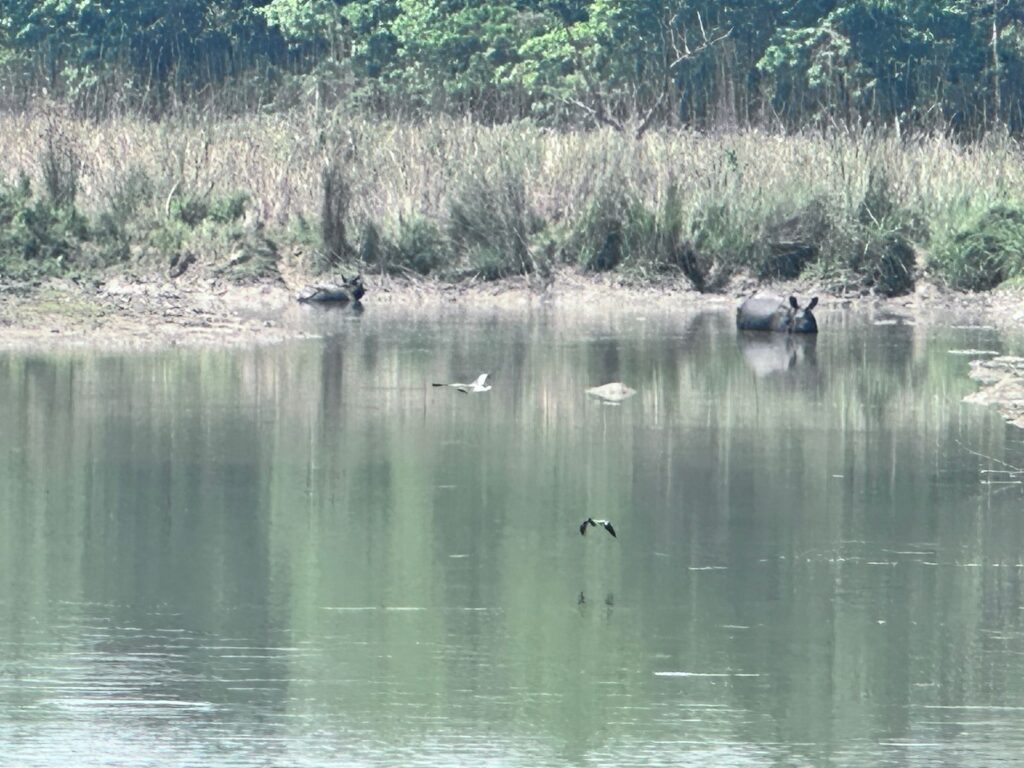
Today, we decided to wake up before the birds and pay them a surprise visit, before heading back to Kathmandu. Starting the trip around the break of the dawn, we went on a guided walking tour to the birding zones. For a bird enthusiast like me, this national park is nothing short of heaven, offering a habitat to over 500 species of both migratory and resident birds- making it one of Nepal’s richest bird sanctuaries. I couldn’t believe my eyes when I spotted Great Hornbill, Kingfisher, Peafowl, Red Junglefowl as well as the endangered Bengal Florican flying freely without the fear of being harmed.
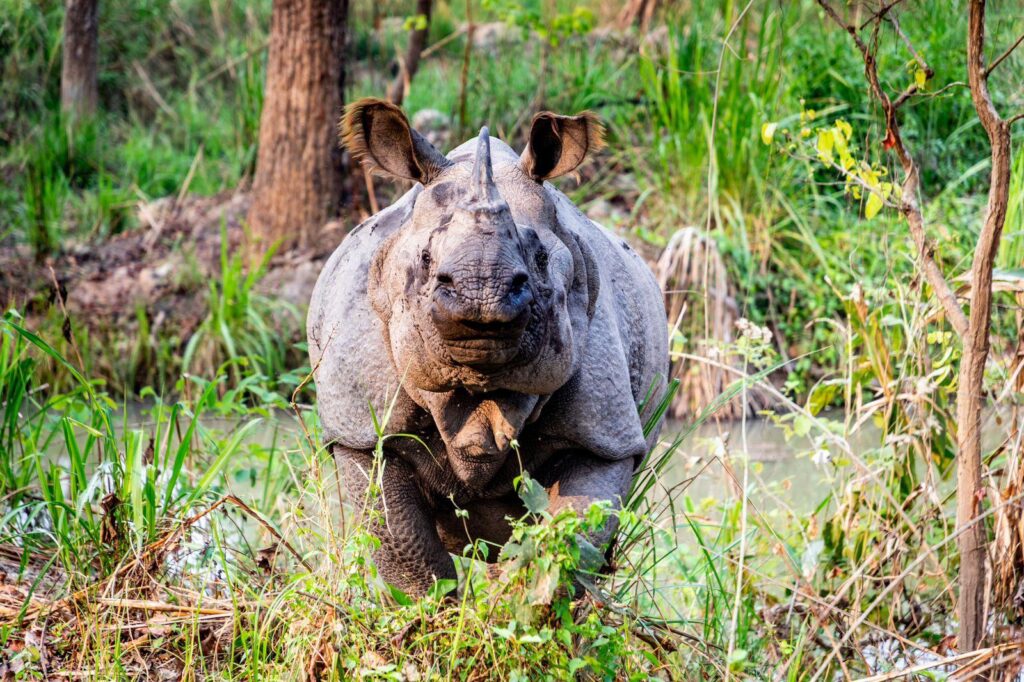
Satisfied, we returned to our accommodation for breakfast. With our cameras packed with wildlife shots and our hearts full of unforgettable memories, we drove back to Kathmandu, bringing our 3-day jungle safari in Nepal to close.
Great thanks to Amigo Treks and Expedition for organizing such a wonderful jungle safari in Nepal for our group. This trip was worth every penny we paid.



